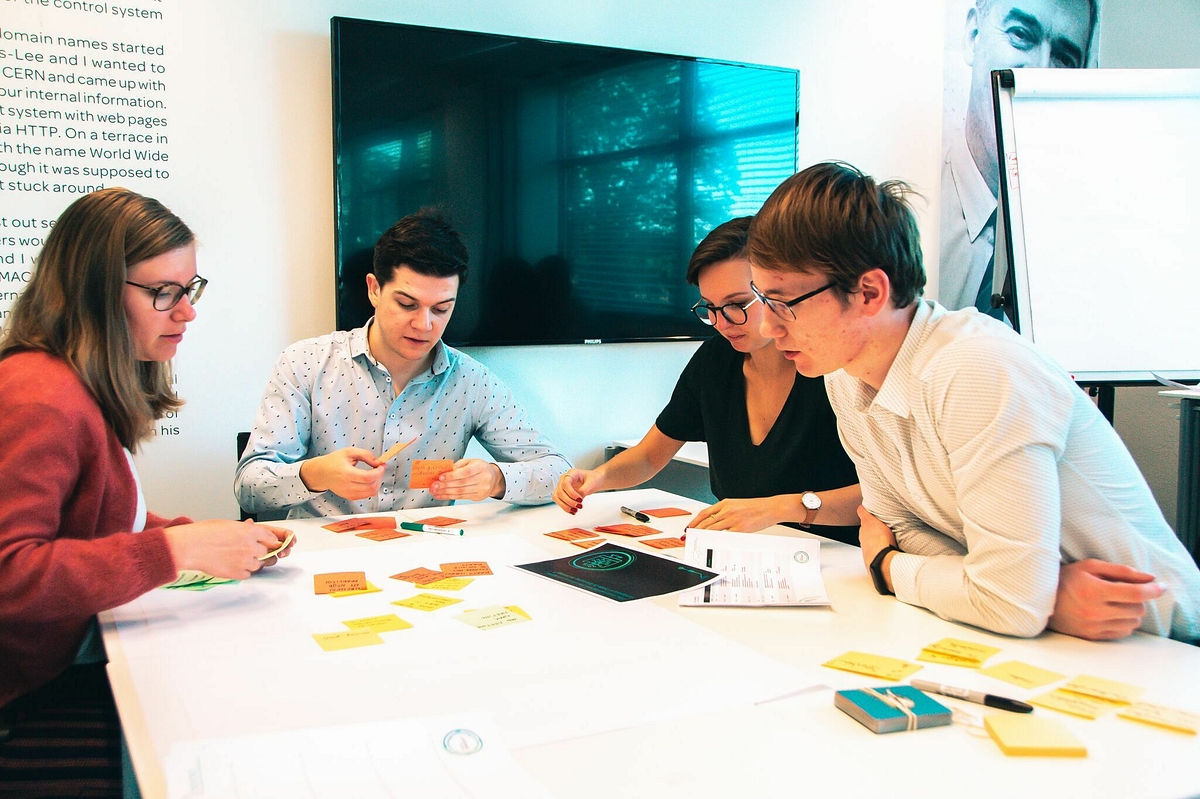
How to stimulate an innovation culture: a five-step guide
Tired of constantly reacting to change rather than driving it? If so, your company needs to create an innovation culture.
We’ve spent years working closely with partners like NMBS and Aquafin to stimulate innovation. Over that time, we’ve learnt that innovation isn’t a goal—it’s a habit. You need to create an environment where both small and large ideas can flourish.
Let’s dig into the five key steps to creating an innovation culture, helping you get the most out of your company and employees’ potential.
1. Make innovation visible
Kick things off by defining a clear-cut innovation strategy and vision. This isn't just about ambitious goals; it's about crafting a narrative that resonates across your organisation, sparking excitement and commitment to a future where innovation thrives.
- Strategise and share: pin down a strategic framework that aligns with your company’s ethos.
- Narrative power: turn this strategy into a compelling story that inspires everyone at every layer in the organisation.
- Brand alignment: seamlessly integrate this narrative into your branding, ensuring every message amplifies your commitment to innovation.
Scroll gallery




2. Ideas from every corner
Innovation flourishes when everyone's on board. Establish channels that invite every team member to pitch their groundbreaking (or even ground-shaking) ideas.
- Engage everyone: launch organisation-wide challenges that solicit insights from all employees, capturing these through surveys, workshops, and brainstorming sessions.
- The stage is yours: facilitate pitch events where employees can showcase their ideas, nurturing the best ones for further development.
The goal is to create a funnel where your company collects promising innovation ideas, vets them, and filters down until you have a portfolio of top initiatives that align with the business’s priorities. Employees will feel heard, and the organisation can tap into their unique insights. Everybody wins.
3. Empower employees through training and coaching
Innovative thinking is a skill that can be developed. If you’re serious about creating an innovation culture, you need to invest in upskilling your employees.
- Training for transformation: implement programs focused on innovation methodologies, problem-solving, and design thinking.
- Hands-on experience: encourage real-world application of these skills, providing the necessary coaching to bridge the gap between theory and practice.
If you want to maximise the success of these training initiatives, conduct pre- and post-training assessments. Survey participants on knowledge gains, skill development, and barriers to applying learning. Better still, track which training sessions employees complete and link these to innovation outcomes they subsequently deliver. Our clients have found this data incredibly useful in optimising the training curriculum that they offer in the future.
They have also seen increased engagement by allowing employees to complete these training sessions in normal working hours. Celebrate when they’ve completed training sessions, and highlight when this training has directly contributed to the business’s success.
This will signal that creating an innovation culture is a company-wide priority, not just a one-off program.
Gallery
4. Validate ideas with real-world testing
Prototype, test, iterate. This triad is helping you validate ideas with actual user feedback before going all in.
- Prototype early: create simple, early-stage prototypes to capture the essence of your idea, seeking out user feedback and validate proposed solutions with early rapid prototyping. These can be paper sketches, role-play simulations, MVP websites, or other quick prototype formats. The goal is to test the essence of an idea with real users as soon as possible.
- Learn and pivot: Use this feedback to refine your approach, aiming for a Minimum Viable Product (MVP) that resonates with your audience.
This agile, iterative approach provides a way to refine and prove concepts with minimal risk. Fail fast with low-investment prototypes to filter out unworkable ideas before over-committing.
5. Embed innovation in the organisational fabric
Embedding innovation into your company's DNA means more than just spearheading initiatives—it's about celebrating the journey, whether it ends in success or valuable lessons.
- Celebrate the process: share the results of your innovation efforts, lauding both wins and insights gained from less successful ventures.
- Roll-out wisely: if you do discover a promising and innovative idea, remember to take the process step by step. This doesn’t mean go slow—it means be methodical. That’s why we suggest companies launch incrementally in waves to manage risk. We work closely with them to identify ways to improve their product or service before they roll it out to all of their customers.
We’ve found that this process becomes easier with practice. Our clients quickly learn what metrics to look for in the testing phase, how to deploy their teams when building out a promising idea, and how to get early adopters who are willing to test and provide feedback.
Continuously revisit and refine this innovation process. Being innovative is a constant journey—there’s always room for improvement.
Make innovation a daily habit
Innovation is more than just creating new ideas—it's about bringing those ideas to life in meaningful ways. Therefore, we encourage our partners to view innovation as a daily habit, not just a series of initiatives.
If you do, your organisation will become a leader in driving change. You’ll engage your employees by tapping into every individual’s unique insights. Promising ideas will emerge that benefit both your customers and your company.
Most importantly, you’ll stay one step ahead in a world that’s evolving quicker than ever.






